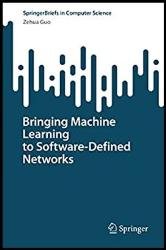 Название: Bringing Machine Learning to Software-Defined Networks
Название: Bringing Machine Learning to Software-Defined NetworksАвтор: Zehua Guo
Издательство: Springer
Год: 2022
Язык: английский
Формат: pdf (true), epub
Размер: 11.9 MB
Emerging Machine Learning (ML) techniques bring new opportunities to flexible network control and management. This book focuses on using state-of-the-art machine learning-based approaches to improve the performance of Software-Defined Networking (SDN). It will apply several innovative machine learning methods (e.g., Deep Reinforcement Learning, Multi-Agent Reinforcement Learning, and Graph Neural Network) to traffic engineering and controller load balancing in software-defined wide area networks, as well as flow scheduling, coflow scheduling, and flow migration for network function virtualization in software-defined data center networks. It helps readers reflect on several practical problems of deploying SDN and learn how to solve the problems by taking advantage of existing machine learning techniques. The book elaborates on the formulation of each problem, explains design details for each scheme, and provides solutions by running mathematical optimization processes, conducting simulated experiments, and analyzing the experimental results.
Emerging Machine Learning (ML) techniques provide new opportunities to design good TE solutions. ML-based TE solutions analyze the network traffic and generate network policies without human experience. The ML-based TE solutions can be generally classified into three categories: supervised learning-based solutions, unsupervised learning-based solutions, and RL-based solutions. Supervised learning-based solutions mainly use various Deep Neural Networks (DNNs) to analyze network traffic. In this category, a certain neural network is designed and trained with a large amount of labeled network data to accurately extract required features. Unsupervised learning-based solutions employ unsupervised learning algorithms to analyze network traffic and extract traffic feature. These first two categories can solve the first problem of TE as mentioned above by fetching the characteristics from the traffic. However, for the second problem, they still need manually designed heuristic algorithms to efficiently solve the formulated NP-hard problem. Besides, these two categories both have their own limitations. It is hard for supervised learning-based solutions to acquit a large amount of labeled data, and it is widely acknowledged that the accuracy of the feature extraction is limited for unsupervised learning-based solutions. RL-based solutions can overcome the aforementioned disadvantages of supervised learning and unsupervised learning-based solutions.
Скачать Bringing Machine Learning to Software-Defined Networks